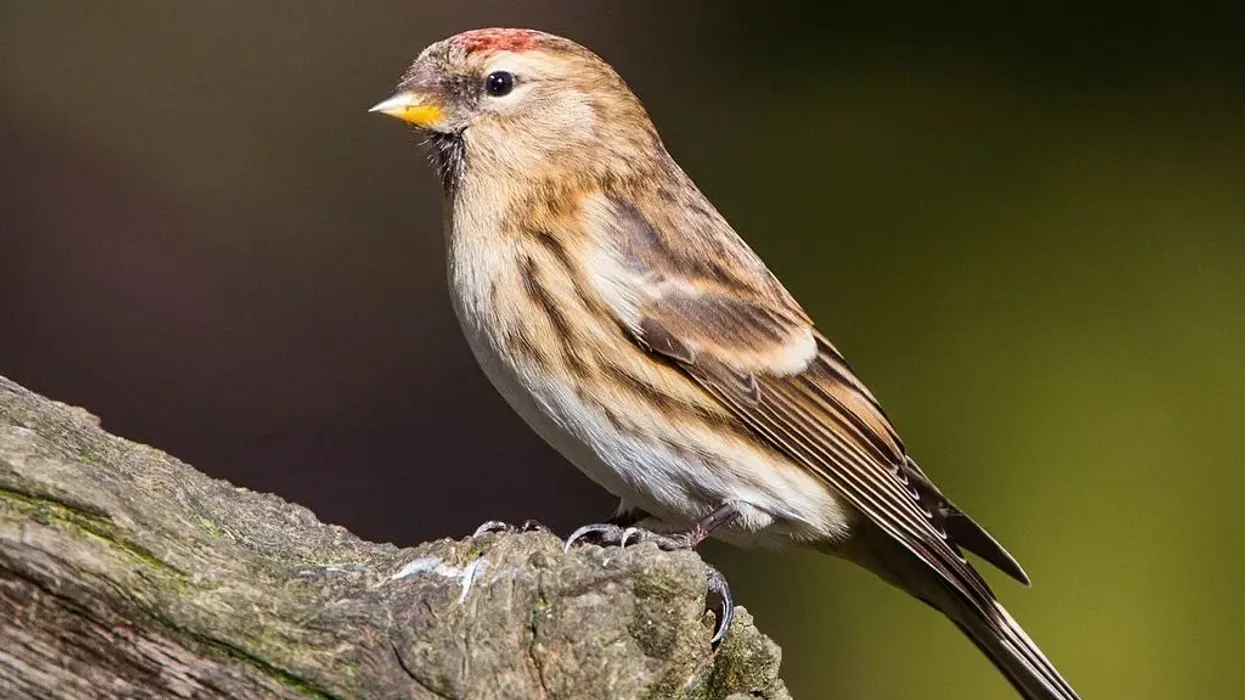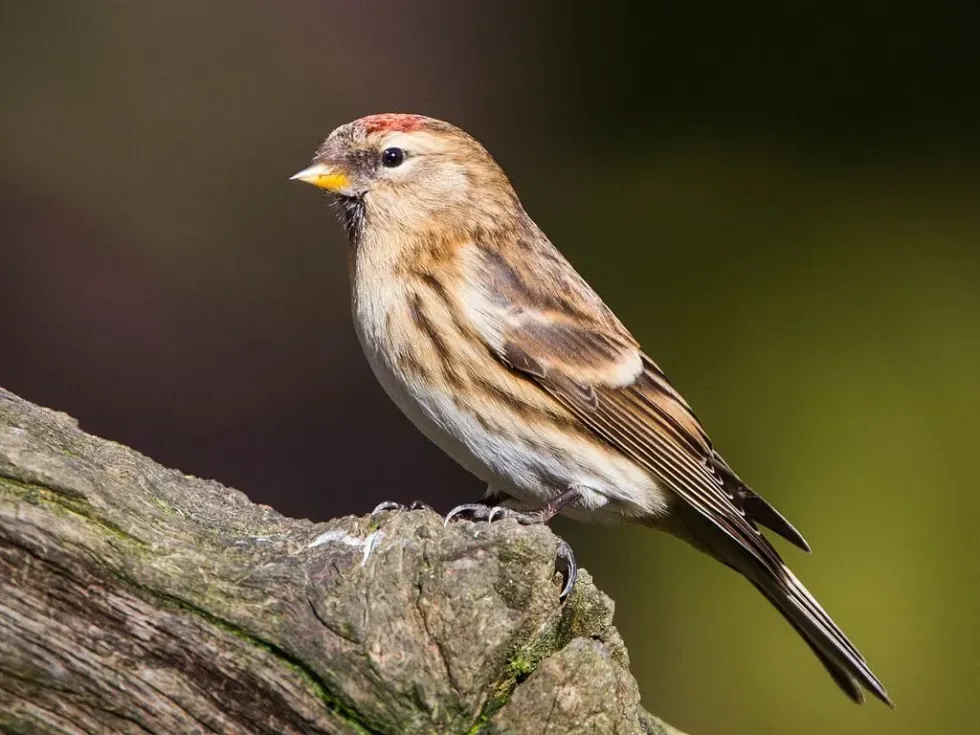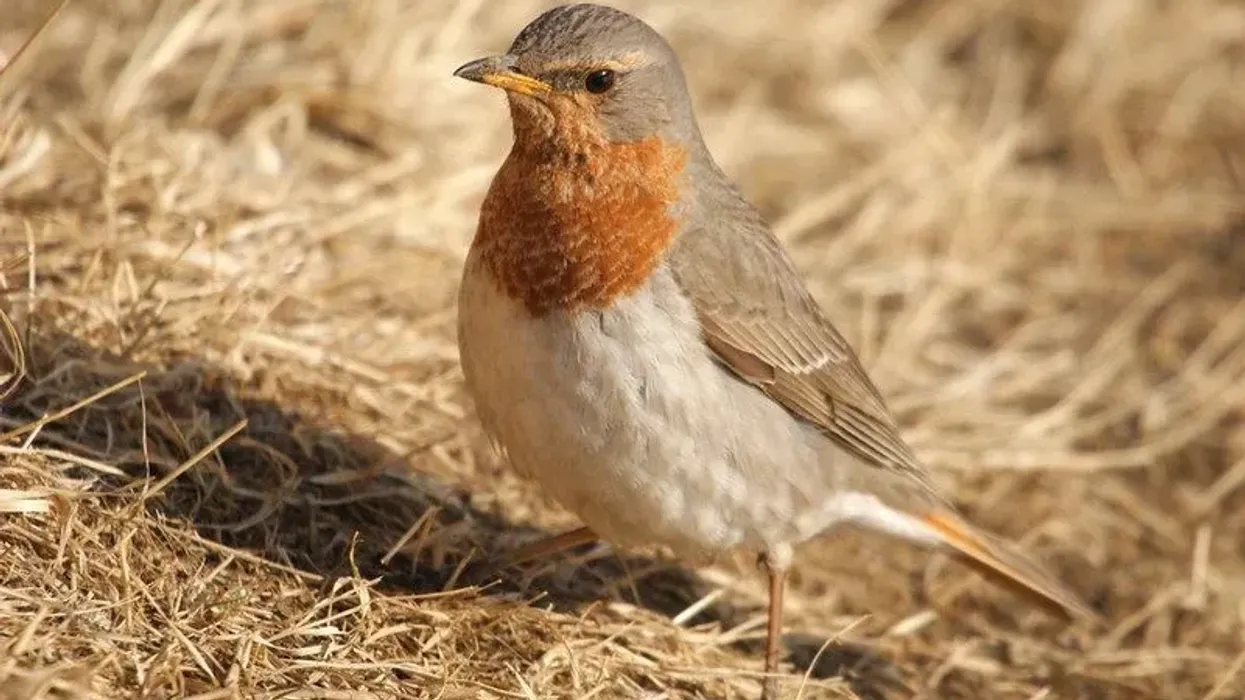Lesser redpoll (Acanthis cabaret) are small bird species whose distribution range is widespread across the European continent. They are introduced in New Zealand and now they are found in their habitat in the South Islands in adequate numbers.
They are species of Least Concern (conservation status) but their population is decreasing in England and thats why they are legally protected there. They are omnivorous species and are known as social feeders as they forage in flocks. They love having seeds and it's their most favorite food.
They eat seeds of birch and alder trees and also eat flowers, buds and insects. They are seen in woodland habitat, shrublands and farmlands.
This was just a small introduction. Ahead in the article there are more interesting facts about this bird waiting for you. So keep reading!
For more relatable content, check out these gouldian finch facts and shoebill facts for kids.
Lesser Redpoll Interesting Facts
What type of animal is a lesser redpoll?
Lesser redpoll (Acanthis cabaret) is a type of bird that can be found across Europe.
What class of animal does a lesser redpoll belong to?
Lesser redpoll birds belong to the class Aves. They belong to the order Passeriformes, family Fringillidae and genus Acanthis. The scientific name of this bird species is Acanthis cabaret also known as Carduelis cabaret. They belong to the family of finches Fringillidae and are very much similar to the common redpoll birds.
How many lesser redpolls are there in the world?
Lesser redpolls are Least Concern species across Europe but are considered rare in England. In 2009, there had an estimated population of around 220000 pairs across Europe.
Where does a lesser redpoll live?
Lesser redpoll (Carduelis cabaret) are small sparrow like birds found across Europe. They live in open woodland areas, forest edges, scrublands and farmlands. They are also seen in coniferous forests.
What is a lesser redpoll's habitat?
The distribution range of lesser redpoll birds is widespread across the European continent. It can be commonly seen flying from tree to tree. Lesser redpoll nests by the North Sea coast from northeastern France to Germany and in southern Poland, Slovakia and northern Romania. They can also be found in Denmark, Norway and Sweden.
They are legally protected bird species in England. Lesser redpolls are introduced species in the New Zealand islands. Now they are common across the South Island there.
Who do lesser redpoll live with?
Lesser redpoll birds are social feeders. They can be seen in groups flying from place to place in search of food.
How long does a lesser redpoll live?
Lesser redpoll birds have an average lifespan range of two to three years. The longest lived lesser redpoll bird was estimated to be six years old.
How do they reproduce?
Lesser redpoll (scientific name, Carduelis cabaret) bird species are monogamous in nature and form their breeding pairs during the winter. After forming their pairs, these bird species start breeding from the month of May. Males and females have different plumage during their breeding season.
Female birds build their nests usually on shrubs and trees. Nests are build up of twigs, branches, leaves, moss, wool and hair. After breeding, female birds lay a clutch of two to seven eggs.
The laid eggs are pale blue or green in color with red-brown streaks on them. These eggs go through an incubation period of 12-15 days.
During this time, the female bird incubates the eggs while the male bird fetches food for her. After the eggs have hatched, the babies are fed by both the parents. It takes around 10-15 days for the chicks to fledge.
What is their conservation status?
According to various census, lesser redpoll species are considered as species of Least Concern. They happen in adequate numbers across Europe. But their number is decreasing in England.
Lesser Redpoll Fun Facts
What do lesser redpoll look like?
Lesser redpoll are small bird species who have their distribution range across the European continent. Spotting them in public is easy, male birds of these species have to different plumage depending on either the breeding season or the non breeding season.
During breeding season, male birds grow red feathers on their chin and neck parts. They have a brown colored upper body with dark streaks on it.
The wings are also brown colored with dark streaks on it. The upper neck and the buff area are also dark streaked. The lower body is kind of white colored.
They have a small tail and dark legs and feet. The bill is yellow colored with a dark tip.
During the non breeding seasons, their rest body color stays the same just the reddish color on their face and breast disappears. Instead of red color, the chin becomes dark in color.
Female birds have a similar plumage but have less streaks on their body. Females wear the same plumage round the year. Lesser redpoll birds have their signature red forehead area.
They are considered the smallest redpoll birds and are very much similar to the common redpoll by looks. They are small bird species who grow to a length range of 4.5–4.9 in (11.5–12.5 cm) and have a weight range of around 0.32–0.42 oz (9–12 g).
They have a beautiful wingspan range of 7.9–8.9 in (20–22.5 cm). Another bird that has a red colored head is the red headed finch.

How cute are they?
They are extremely cute and cuddly. They are so small that they can fit into your palm easily. They are small and clumsy finches who are treat to eyes.
How do they communicate?
Lesser redpoll are small birds who can be heard chirping and flying from here and there in search of seeds
How big is a lesser redpoll?
Lesser redpolls live in woodland areas and are social feeders. They are small finches who grow to a length of 4.5–4.9 in (11.5–12.5 cm) and weigh around 0.32–0.42 oz (9–12 g) with a cute wingspan of 7.9–8.9 in (20–22.5 cm).
How fast can a lesser redpoll fly?
Exact flying speed of lesser redpoll birds is still not known.
How much does a lesser redpoll weigh?
Lesser redpolls are small finches who grow to a length of 4.5–4.9 in (11.5–12.5 cm) and can weigh around 0.32–0.42 oz (9–12 g).
What are the male and female names of the species?
There are no specific names assigned to the lesser redpoll males or females. They both are equal sized birds who have different plumage. They are similar to the common redpoll in looks.
What would you call a baby lesser redpoll?
Like all other baby birds, baby lesser redpolls are also known as chicks or young ones. The redpoll eggs go through an incubation period of 12-15 days and then the chicks come out. The chicks fly on their own after about 10-15 days of their birth.
What do they eat?
Lesser redpoll are social feeders of foods derived from both plants and animals. They are an omnivorous bird species that forage in flocks. They mainly eat small seeds and insects. Small seeds of birch and alder trees and grass are their all time favorite food. Other than alder and birch seed, they also eat insects and larvae.
Are they dangerous?
Not at all. Redpoll species are small and clumsy birds
Would they make a good pet?
Not really. The lesser redpoll population are typically wild in nature who belong to their natural habitats in Europe. They belong to the open environment and capturing them can cause adverse affects on them.
Did you know...
Lesser redpoll generally migrate but cover a very small distance. Their habitats are widespread in Europe and they migrate from one place to another while being in that area.
They were once upon a time endemic to Europe but they have recently been split and introduced in New Zealand and their population is doing quite well there.
Lesser redpolls and linnets are very similar birds but linnets have a brown-gray colored crown and the redpolls have a red colored crown.
What is the difference between a redpoll and a house finch?
House finch and lesser redpoll birds have a similar body color pattern and they belong to the same family of Fringillidae. Yet lesser redpoll and house finch have differences between them. House finch are bigger in size if compared to the lesser redpoll.
House finch bill are bigger and stronger than the lesser redpoll bill. Both the species have different genus identity. The lesser redpoll is from the genus Acanthis while the jouse finch is from genus Haemorhous.
Here at Kidadl, we have carefully created lots of interesting family-friendly animal facts for everyone to discover! For more relatable content, check out these little spotted kiwi facts and indigo macaw facts pages.
You can even occupy yourself at home by coloring in one of our free printable lesser redpoll coloring pages.









